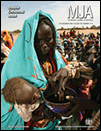Estimating the cost of alcohol-related absenteeism in the Australian workforce: the importance of consumption patterns
Abstract
Objective: To estimate the extent and cost of alcohol-related absenteeism in the Australian workforce.
Design: A secondary analysis of select data obtained from 13 582 Australian workers (aged ≥ 14 years) collected as part of the 2001 National Drug Strategy Household Survey.
Main outcome measures: Self-reported measures of alcohol-related absenteeism, illness or injury absenteeism and alcohol consumption categorised according to National Health and Medical Research Council (NHMRC) guidelines for short- and long-term risk.
Results: The use of self-reported measures of alcohol-related absenteeism resulted in an estimate of 2 682 865 work days lost due to alcohol use in 2001, at a cost of $437 million. The use of self-reported measures of illness or injury absenteeism to determine the extent of absenteeism attributable to alcohol use resulted in an estimate of 7 402 341 work days lost, at a cost of $1.2 billion. These estimates are about 12 to 34 times greater than previous estimates based on national data. Low-risk drinkers and infrequent or occasional risky and high-risk drinkers accounted for 49%–66% of alcohol-related absenteeism.
Conclusions: The extent and cost of alcohol-related absenteeism is far greater than previously reported, and more than half the burden of alcohol-related absenteeism is incurred by low-risk drinkers and those who infrequently drink heavily.




